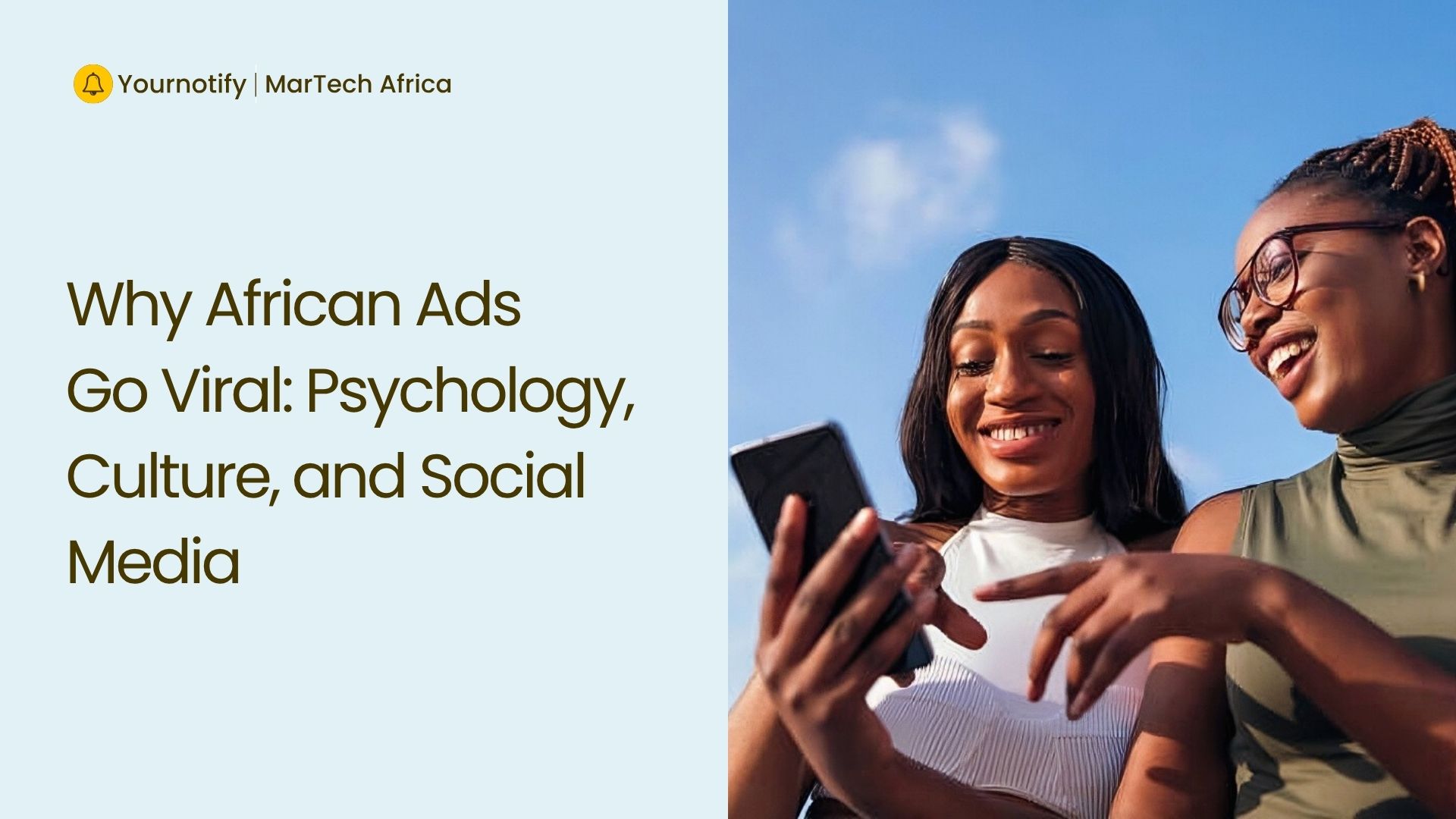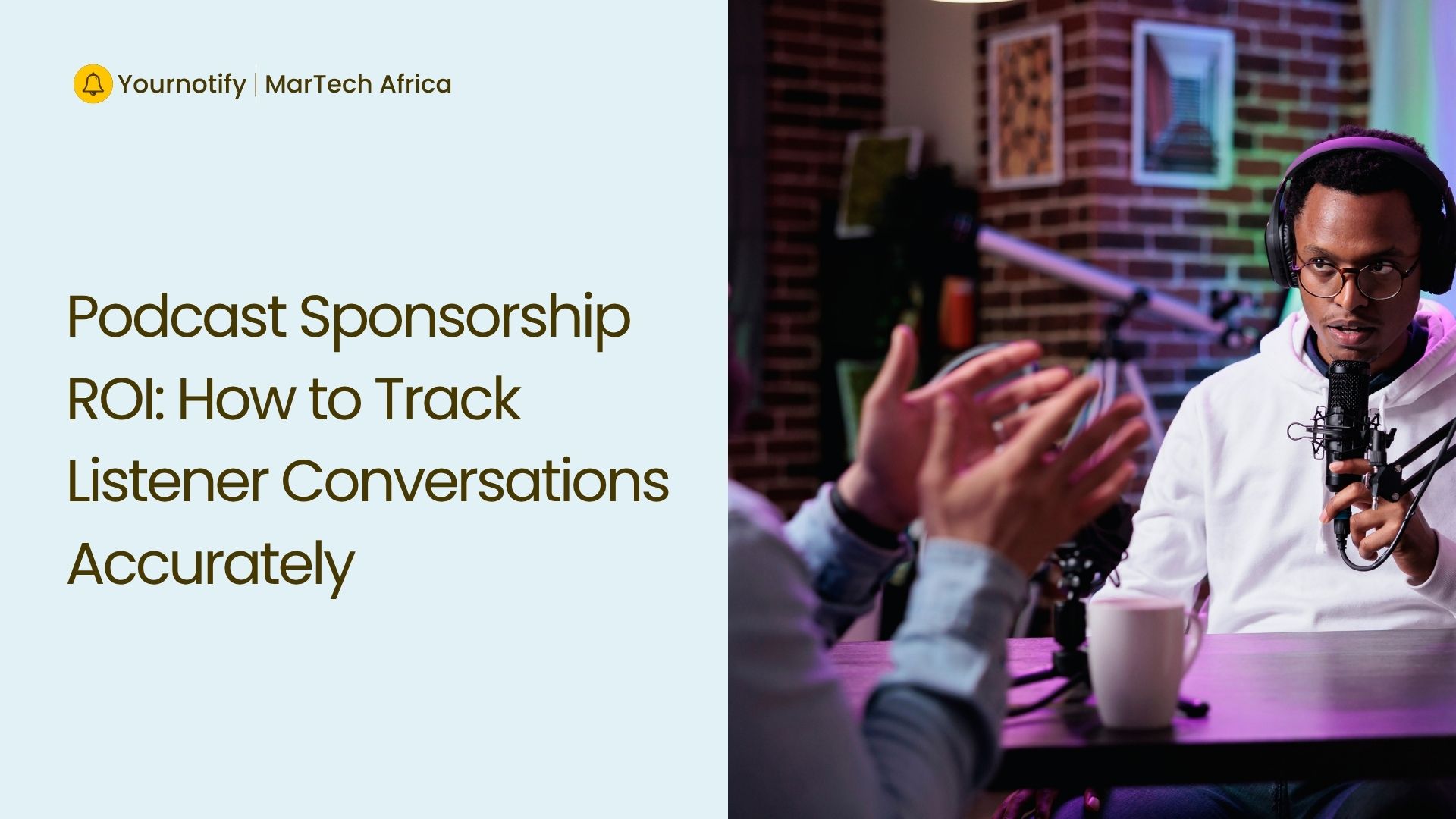Scroll through your phone today and you’ll see dozens of fintechs promising seamless transfers, skincare…

Why African Ads Go Viral: Psychology, Culture, and Social Media
Africa’s advertising landscape is in the middle of a seismic shift. Once dominated by billboards, radio jingles, and TV spots, today the continent’s ad spend is increasingly digital and the numbers prove it.
In South Africa, digital advertising revenue hit an all-time high of ZAR 17.8 billion (≈US$1.1B) in 2023, giving online platforms nearly 40% of the total ad market. Nigerian brands are following the same trajectory: by 2025, digital channels accounted for over US$340 million of the country’s nearly US$1 billion ad spend, with online video alone surging by 49% year-on-year.
This wave of digital transformation has created the perfect environment for virality. Ads are shared, remixed, and amplified through WhatsApp groups, Instagram Reels, TikTok challenges, and Facebook feeds.
With nearly 192 million adults in Sub-Saharan Africa accessible through Meta platforms alone, and youth audiences driving trends, African campaigns that strike the right cultural and emotional chord can leap from a single post to continent-wide recognition almost overnight.
Why African Ads Go Viral
1. The growth of social connectivity
Africa’s viral ad culture is fueled by the continent’s rapid rise in mobile-first connectivity. Most people came online through smartphones, making social platforms and messaging apps the main entry point to the internet. Nigeria now counts over 107 million internet users, nearly half its population, while South Africa has 50.8 million, with almost 79% penetration.
2. Emotional arousal drives sharing not just “feelings”
Research shows that content goes viral when it sparks high-arousal emotions rather than low-arousal ones like sadness or resignation. In other words, people are more likely to hit “share” when they feel energized rather than drained.
A well-known study published by the Marketing Science Institute (MSI) found that emotions linked to excitement and amusement consistently increased the likelihood of content being shared.
African ads tap into this psychology by leaning on emotions that feel immediate and communal. Campaigns that celebrate national pride, highlight local humor, or remix nostalgic cultural moments activate emotional energy.
For example, humorous Nollywood-inspired ads or music-driven campaigns tied to Afrobeats often go viral across timelines because they spark joy and collective pride at the same time.
3. Storytelling
Across the continent, oral traditions response performances have always been designed to be memorable, rhythmic, and repeatable. These elements map neatly onto today’s digital formats.
Modern ads that use this naturally thrive on short-form platforms like Instagram Reels, TikTok, and YouTube Shorts. The rhythm of storytelling makes them easier to remember, retell, and remix, which are essential mechanics of virality.
As one analysis on digital storytelling trends notes, campaigns that echo traditional narrative structures see stronger engagement because they “invite audiences to become part of the story” . In Africa, where storytelling is community-building and ads that borrow these cues feel both familiar and fresh.
This is why a 30-second skit in Pidgin English or a short-form ad with a proverb-driven punchline can spread across with the same power oral tales once carried across village squares.
4. Social currency and identity
Marketing scholar Jonah Berger’s research on “social currency” shows that people share content when it makes them look witty, informed, or connected. Sharing becomes a way to signal identity. In Africa, this plays out vividly because ads that weave in local slang, reference cultural touchstones, or nod to inside jokes give audiences a chance to say, “I get this, I belong.”
As Consumer Researcher notes, “content that affirms social identity travels faster because people use it to strengthen bonds” . African brands are handing them cultural currency to spend in their own networks which is a powerful incentive to share.
5. Distribution differences
One of the biggest distinctions in Africa’s viral ecosystem is where content spreads. Unlike Western markets, where public feeds dominate, messaging apps like WhatsApp and Telegram are central to distribution. Ads often gain traction not through trending hashtags but through private group forwards family chats, alumni circles, and neighborhood networks where trust and tight social bonds amplify sharing.
This shift shapes creative choices. Short, vertical videos optimized for mobile are more likely to travel across these networks. Captions and sound cues that still make sense with the volume off are critical, since many people watch (and forward) ads silently. In this way, African virality is less about algorithmic feeds and more about human networks acting as accelerators.
6. Locality and Authenticity
While glossy global-style ads have their place, it’s often the locally rooted, culturally fluent ones that go viral in Africa. Campaigns that use local languages, familiar settings like markets or buses, and everyday humor resonate because they feel authentic like something “from the neighborhood.”
In Nigeria especially, the most memorable ads are those that tap into shared nostalgia or everyday life, quickly becoming cultural reference points people are eager to share.
7. Examples & learning from the big hits
Across Africa, campaigns that blend emotional hooks, cultural cues, and shareable formats have consistently gone viral. The pattern is clear: capture attention in the first 3–5 seconds, deliver a culturally resonant payoff, and make sharing effortless with short, memorable content.
Three repeatable strategies drive virality: nostalgia to evoke pride, humor or satire to encourage sharing, and inspirational content for mass engagement. These principles offer a roadmap for marketers aiming to create campaigns that resonate locally while spreading widely.
8. Risks
A practical caveat, internet access across Africa is not uniform, and in some countries it can be unstable or politically constrained. Internet shutdowns or platform blockages have occurred, temporarily suppressing content and sometimes amplifying it when connections return.
Marketers need to account for these realities, building campaigns with backup distribution plans and local moderation strategies to navigate connectivity issues and legal constraints
Practical checklist to design more shareable African ads
- Lead with a high-arousal hook (emotion or curiosity) in the first 3 seconds.
- Use local language/slang or visual cultural cues so the audience recognizes themselves.
- Make the message re-tellable: a clear setup payoff people can describe in a sentence.
- Optimize for messaging apps: short runtime, captions, and strong visuals without sound.
- Include an element of social currency like a joke, reference, or “I-was-there” nod.
- Test in small, local groups before scaling to discover cultural edge-cases.
Virality in Africa happens when content reaches people through communal networks, shared culture, and emotions that naturally encourage active sharing. For brands, the key lesson is simple: combine universal psychological triggers with authentic local storytelling and messaging-platform‑friendly distribution strategies.
Related Content


